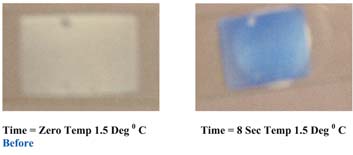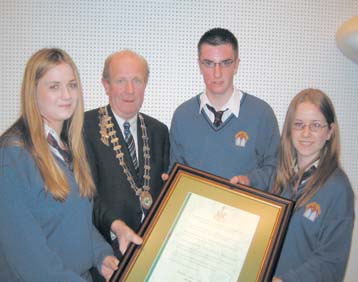| 2005 |

|
YEAR BOOK |
Desmond College, Limerick
|
ICE: intelligent cat's eyes
|

This problem led us to the possibility of designing something that would warn drivers to a deterioration of road conditions due to inclement weather, especially icy conditions. We quickly established that the current method of "Cats Eyes", whilst fantastic, had limitations, so we decided to concentrate our efforts on making an intelligent cat's eye, which we later christened I.C.E. for short.
In an effort to make cat's eyes intelligent we originally proposed to use a thermostat; when the temperature dropped, the reflective strips would change and thus refract a different colour light. We decided that whilst this would work in practice, the physical size of the cat's eye prohibited us from fitting the workings inside the existing footprint.
The eureka moment came whilst assisting in the minding of children during the summer. One of the children had a bowl that changed colour when heated and returned to normal when cooled. We quickly became aware of other similar uses of this type of heat sensitive material, such as indicators on batteries to indicate power levels and flexible thermometers used in medicine. Crystals refract different colours when exposed to a light source, similarly thermocromic ink, depending on its molecular structure, takes on a different colour depending on temperature. We carried out extensive testing on the material until we perfected the colour change.

Our next problem was how to apply the ink in such a way as to allow the light from the car to be reflected, several patterns and designs later we achieved the desired result. In addition to solving bonding problems, we overcame the problem of "light fastness", that is the propensity for items to lose their colour when exposed to natural sunlight.

| This article was sponsored by the Patents Office |
|---|